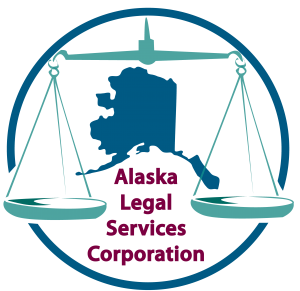Learning about the lending documents, their purpose, and how HUD can assist in the lending process can increase your awareness and help prevent you from becoming a victim of lending discrimination.
What documents should I receive in the lending process?
Mortgage brokers and lenders are required to provide and accept a mortgage loan application from anyone who wishes to apply. As a successful applicant, a lender is required to provide the following at no cost to you:
- Good Faith Estimate;
- Truth In Lending Disclosure Statement;
- Copy of your loan application; and
- Mortgage Servicing Disclosure Statement
Borrowers should also receive a Special Information Booklet if they are purchasing a mortgage loan and a HUD-1 Settlement Form when the mortgage loan is closed or settled.
Why do I need these documents?
- The Special Information Booklet contains consumer information regarding various 1. real estate settlement services. The lender is required to provide this information only when the borrower is purchasing a home.
- A Good Faith Estimate, or GFE, is an estimate of charges or range of charges that a 2. prospective borrower is likely to incur in connection with financing a home. The lender is required to provide the borrower with a GFE within 3 business days after the mortgage loan application is received.
- Borrowers will receive two Truth In Lending Disclosure Statements, or TILs, in the mortgage loan process. The first, a preliminary version, will be received with the Good Faith Estimate shortly after completing a mortgage loan application. The preliminary TIL discloses your annual percentage rate (APR), the finance charge, the amount financed and the total number of payments. The second version, a final version, is one of the documents that a borrower will sign during the mortgage loan closing or settlement. The final TIL discloses terms of your mortgage loan and any pre-payment penalties. Borrowers can compare the costs of different loans by comparing the preliminary TIL to other preliminary TILs from different lenders or with different type mortgage loans.
- A HUD-1 Settlement Statement is received when the 4. mortgage loan is closed or settled. Borrowers may request to receive a copy of the HUD-1 a day before settlement, so that they can compare the costs of the mortgage loan to what was disclosed in the Good Faith Estimate.
A HUD-1 Settlement Statement:
- Must show all actual settlement costs of all mortgage loan transactions;
- Should clearly itemize all closing-related charges that are paid at settlement or outside of settlement;
- Must be provided to the borrower during the “closing” or “settlement” of a residential real estate transaction; and
- Should be issued for conventional loans, as well as Federal Housing Administration (FHA) and Veterans Administration (VA) mortgage loans.
A borrower will receive a HUD-1 for all real estate related transactions, including:
- Home purchase loans;
- Refinance loans;
- Property improvement loans;
- Lender-approved mortgage loan assumptions;
- Home Equity Lines of Credit or HELOCs; and
- Reverse mortgages.
- A copy of the borrower’s mortgage loan application is sent to the borrower with the other preliminary disclosures such as the Truth in Lending Disclosure Statement, Mortgage Servicing Disclosure Statement, and the Good Faith Estimate. A borrower can check the information on the application against what they know to be true about their own financial capacity.
- The Mortgage Servicing Disclosure Statement discloses to the borrower whether or not a lender intends to service the mortgage loan or transfer it to another lender and any complaint resolution procedures. This can help the borrower understand what kind of company he or she is dealing with.
How do I use these documents during the lending process?
Borrowers should refer to the Special Information Booklet, Good Faith Estimate (GFE), HUD-1, and the Mortgage Servicing Disclosure Statement until the closing or settlement of your mortgage loan. For example:
- The Special Information Booklet can be used as a reference for available real estate settlement services.
- The GFE should be retained by the borrower to compare with the final settlement costs and to ask the lender questions about any changes.
- The Mortgage Servicing Disclosure Statement will be used as a reference of the lender’s intentions regarding servicing the loan.
Do I need any of these documents after the closing of my mortgage loan?
Yes. As a borrower, you will need your HUD-1 Settlement Statement. The HUD-1 itemizes the services provided to you and the associated fees charged during the lending process. After closing, you will use the HUD-1 to record the real estate transaction fees when filing your personal income taxes.
Who should I contact if I need assistance during the lending process?
HUD has many resources available to assist you during the lending process. For a complete listing of the local HUD offices, visit the HUD website at www.hud.gov/offices.
Also, HUD approved housing counseling agencies throughout the country can provide you with advice, free of charge or for a nominal fee, such as: buying a home, defaults, foreclosures, credit issues, and reverse mortgages. To find a housing counselor near you, call (800) 569-4287, or go to HUD’s housing counselors list online at www.hud.gov/offices/hsg/sfh/hcc/hcs.cfm.
For more information on Alaska Housing Finance Corporation’s First-Time Homebuyer programs, visit the AHFC website at www.ahfc.us/buy/loan-programs/first-time-loans/.
